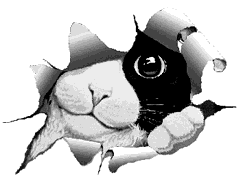
TURKISH VAN
ORIGIN
The cat known in the United States as the Turkish Van is a rare and ancient breed that developed in central and southwest Asia, which today encompasses the countries of Iran, Iraq, southwest Soviet Union and eastern Turkey. “Van” is a common term in the region that has been given to a number of towns, villages and even a lake. They were first brought to England in 1955 as the Turkish cats, but this was later changed to Turkish Van to avoid confusion with the Turkish Angora. Although the breed has an ancient lineage, the Turkish Van is a relative newcomer to the United States, arriving in 1982. They are considered regional treasures in their homeland, and are not readily available for export to other countries. Even in areas where the breed has been known for centuries, they are still relatively rare. The breed was first brought into Europe from the Middle East by returning crusaders, and has been known by a variety of names over the centuries such as the white ringtail and the Russian longhair. A common misconception is that the Turkish Van is simply a color variation of the better known Turkish Angora. In reality, the Van and the Angora are distinct breeds that developed in geographically distant regions of Turkey. When seen together, the differences in type, size, boning and coat are readily apparent.
ASPECT
The coloration of the Turkish Van, which is considered by many to be the original breed to carry the piebald gene, calls for a white, semi-longhaired cat with colored markings restricted primarily to the head and tail. Other piebald cats that have been selectively bred for many generations to achieve similar markings are said to be “van-patterned” after the breed that originally sported it. The coat lacks an undercoat and has a very unique cashmere-like texture that makes it water-resistant.
CHARACTER
The Turkish Van takes three to five years to reach full maturity and is a large and agile cat of substantial strength. They are very intelligence as well as curious and make very rewarding companions in the right home. they love water and in their native region they have been termed “the Swimming Cats”.
CARE
The breed is a healthy one and the unique coat does not lend itself to matting, so they require little grooming.